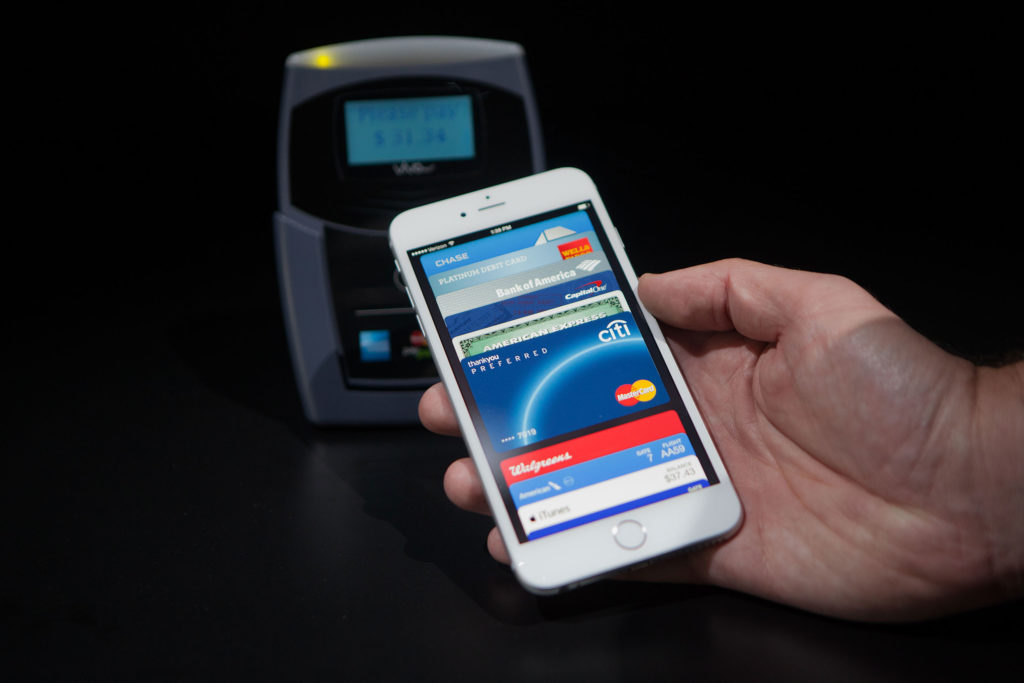Countless times, I’ve managed to leave my wallet at home. Or my debit cards. Or my kids. (that only happened once, and I did go back for them – honest) But rarely have I left my smartphone. Some of you can probably sympathize with that feeling of not knowing where your phone is. It’s an important tool that we’ve come to depend on greatly. In addition to communicating with family and friends, I can look up information. I can reference my bank accounts. And I can pay for things.
Welcome to the age of mobile payment. Where your phone will replace your credit and debit card, allowing convenient and secure payment for services and goods.
Mobile payment solutions allow you to use your mobile phone to pay for goods or services, theoretically without exposing the information to the merchant. Simply tap your phone on the terminal where you would typically swipe a card, and the transaction is complete. Think of it as a barrier between your protected credit and debit information, and the retailer processing the transaction (which is typically where card information is stolen). Apple’s “Apple Pay”, Google’s “Google Wallet”, and CurrentC are just a few of the mobile payment services available today.
Beyond the convenience factor with mobile payment systems, security is another driver. Traditional credit and debit cards are inefficient, insecure and prone to failure. The payment card industry has learned a lot about security, and what weaknesses there are to exploit. That black strip on the back of the card is actually magnetic tape. It contains all the information about the card – your name, the card number, and expiration. It’s possible to capture this information in transit – that is the evildoer can intercept it when you swipe. Not to mention, all this information is stamped on the card as well. Someone who sees the card can simply write it down. And if you pay for something and the vendor is not secure – whether they save your credit card information or not – it’s possible a hacker could steal your card numbers. Any of these situations mean your card is compromised.
Ever leave your card somewhere? Fortunately we live in an area where honest people still reside, and cards are usually promptly returned. But that’s not always the case. Since credit and debit cards are tangible objects, possession of them allows the thief to use it at will.
Mobile payment methods, on the other hand, use several different approaches to transaction security. For one, you have to have the device, in your hand, during the transaction. NFC (near field communication) allows your smartphone to communicate with the payment terminal. Instead of transmitting a credit card number, the devices communicate using a token. This is a temporary number used only once to complete the transaction. So even if a hacker was somehow able to capture that, it’s no longer usable after the transaction.
What if someone steals your phone, can’t they access this information and start using your mobile device to pay for things? Fortunately, there are several features designed to prevent this from happening. Depending on the device and service being used, you have to confirm your identity before the transaction can start. With Apple Pay, you use the thumbprint sensor built into the iPhone 6 to prove who you are. For Google Wallet, you must enter a pin to unlock the application. Additionally, with both services, the financial information is stored on a separate area of your phone or securely with the payment application. Think of it like an island, surrounded by a moat with alligators, fire breathing dragons and a very tall wall. A serious amount of protection indeed.
Now the question of using a mobile payment solution when purchasing something online, where you aren’t standing in front of a payment terminal? Muddy waters for now. The retailer must support payment with the mobile payment service you are using. This will be indicated by a logo displaying the mobile payment solution that vendor offers.
While mobile payment systems are quickly becoming mainstream, I wouldn’t go cutting up your credit and debit cards just yet. For starters, there are several mobile pay solutions circulating – and depending on where you shop they may or may not be accepted. Currently, somewhere around 3% of retailers are accepting mobile payments. I expect this number to grow quickly as the payment card industry looks for ways to enhance security and reduce costs, and as more consumers adopt this type of payment method. As a matter of fact, by October 2015 MasterCard and Visa will require consumers to transition to EMV cards, a more secure type of credit and debit card. This means retailers will need to use compatible terminals – most of which support mobile payment solutions. As far as I’m concerned, I’m looking forward to forgetting my debit card at home. Now where did I put my phone?

Reader Interactions